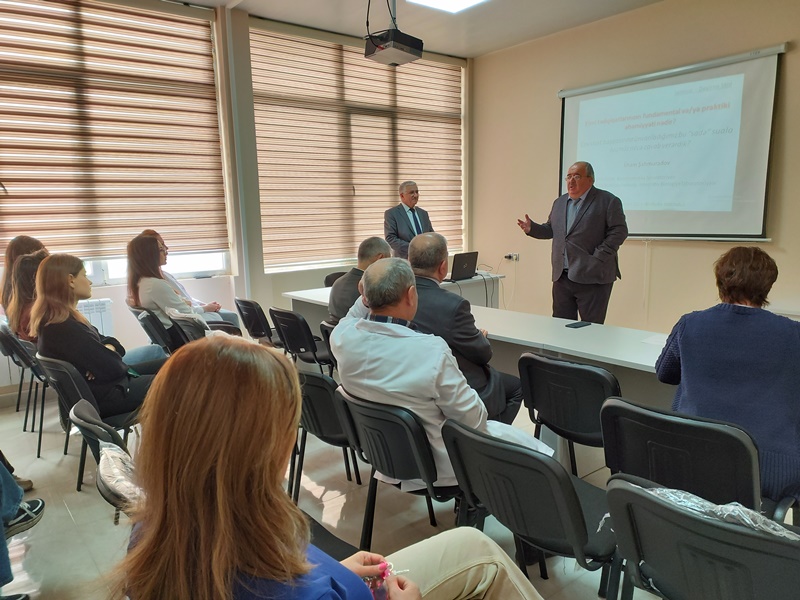
At the Institute of Biophysics of ANAS, a scientific seminar on “Genotyping analysis of clinically significant mutations of the GALT gene” dedicated to the Day of Science was held.
The event was organized by the Laboratory of Molecular Oncology of the National Center of Oncology of the Republic of Azerbaijan and the laboratory of Molecular and Cellular Oncology of the Institute of Biophysics.
Opening the seminar, the Director General of the Institute, corresponding member of ANAS Oktay Gasimov spoke about the importance of the topic and the necessity of large-scale modern research in this direction.
Then an employee of the National Center of Oncology, head of the Laboratory of Molecular and Cellular Oncology, Ph.D. in Biology Leilakhanim Malikova spoke in detail about the “CANCER” panels currently used and intended for use in the treatment of malignant tumors, especially predictive and prognostic panels, the results of neoadjuvant chemical therapy carried out according to the standard protocols at the stage of SVX IIIC (T1-4 N3M0) and the role of TUBB3 gene expression at the early stage of breast cancer formation.
Then, Doctor of the Laboratory of Molecular Oncology of the National Center of Oncology Sabina Mehdizadeh made a presentation on the topic of the seminar. She spoke about the clinical significance of the GALT gene that causes galactosemia and the genotyping of its mutations, prenatal diagnosis and neonatal screening.
The report of Genetic engineer Elnara Aliyeva of the Laboratory of Molecular Oncology of the National Center of Oncology of the Republic of Azerbaijan also listened at the event. In her speech, E. Aliyeva spoke about the method of detecting clinically significant mutations of the GALT (galactose-1-phosphate uridylyltransferase) gene. She also provided detailed information on the preparation of reactive kit and relevant protocol to be used as a screening method, including the design of oligonucleotide primers, selection of PCR-method mode, agarose-gel electrophoresis and the detection of expected DNA fragments.
In conclusion, there was an exchange of views on the report, questions were answered.